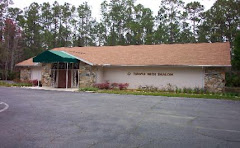

Temple Beth Shalom Religious Schools students are being introduced to the all-important world of prayer, a major contact point between Jews and their Judaism during their life-long journey.
Teaching on Jewish prayer seeks to familiarize students with the structure of the prayer service and to explain the meaning of the various prayers and the theology of prayer, why Jews pray.
The curriculum of the Beth Shalom Religious School under the direction of Robyn Shapiro seeks to teach how to pray so that prayer works as a spiritual practice, so that it moves young people spiritually. The goal is for students to achieve during prayer an elevated state of mind so that they actually taste and experience the nearness of God. That is what is meant by "real davvening."
Hasidic literature particularly contains many techniques to achieve this kind of davvening. Most of these techniques are fairly simple, such as controlling one's glance in order to concentrate better. These hasidic davvening practices are part of the curriculm. When practiced faithfully, as students are taught, praying will be immeasurably higher than before. Young people get deep satisfaction from davvening and will experience the profound pleasure and joy of the nearness of God. Many people today find prayer difficult. Somehow prayer doesn't seem to provide enough reward or satisfaction for them to see it as their pathway to spiritual fulfillment. But this lack of enthusiasm for prayer is primarily due to the fact that most people have not been taught how to pray. The rote praying that many people are accustomed to and that fails to provide powerful results is not the same as real davvening. Prayer is a form of meditation and to benefit from any meditation one must learn and apply the proper methods. Only by knowing how to pray can anyone really davven and progress spiritually by davvening. Sometimes this takes time; students can't expect to reach the final goal in their first attempts.
A diver may find no pearls the first time one dives in the ocean but must not conclude that there are no pearls there. Divers must dive again and again to find them. Students can find God by prayer, but must be taught to persevere. They are be encouraged to persist in their efforts when they experience the life and vitality they infuse into your davvening.
Both beginning and experienced davveners, men and women can benefit by using the many traditional meditation techniques for prayer. Once people realize that there is something to learn about davvening as a spiritual practice, a synagogue will be on the path to a renewal of Jewish prayer. The following parable helps to explain the situation today: There was once a king who so loved music that he directed his musicians to play before him each morning. The musicians came to the palace and performed, to obey the king's command, but also because they loved and respected the king and valued their chance to be in his presence. So every morning they played for the king with enthusiasm and delight. For many years all went well. The musicians enjoyed playing each morning for the king and the king enjoyed listening to their music. When, at last, the musicians died, their sons sought to take their places. But, alas, they had neither mastered the art of their fathers nor had they kept their instruments in proper condition. Worse still, the sons no longer loved the king as did their fathers. They just blindly followed their fathers' custom of arriving each morning at the palace to perform. But the harsh sounds of their music were so offensive to the king's ear that after a time he ceased listening. But then some of the sons developed a renewed love and reverence for the king, however pale compared to the love and reverence of their fathers, and they realized that the king had stopped listening to their uninspired music. Although they wanted to perform to honor the king, they recognized that their inadequate skills made them unworthy to play before him. So they set about the difficult task of relearning the forgotten art that should have been their inheritance from their fathers. Every day, before coming to the king, they spent time tuning their instruments. Upon entering the palace concert room and hearing the racket of the other musicians, they sought out an obscure corner for themselves where they could play undisturbed. They also remained long after the other musicians had departed, so that they might improve their skill. And in their homes they continued to practice and to struggle with their instruments as best they could. The king was aware of their efforts and was pleased, for even though they did not play with the same talent as their fathers, still they strove, to the best of their abilities, to once more bring pleasure and joy to the king. Thus was their music received by the king with favor. One lesson of this parable is that if students want to progress spiritually by davvening, they must be helped to develop their davvening skills. But an even more important lesson is that students, and all Jews, must davven with devotion, for only devotion wins God's favor.

















